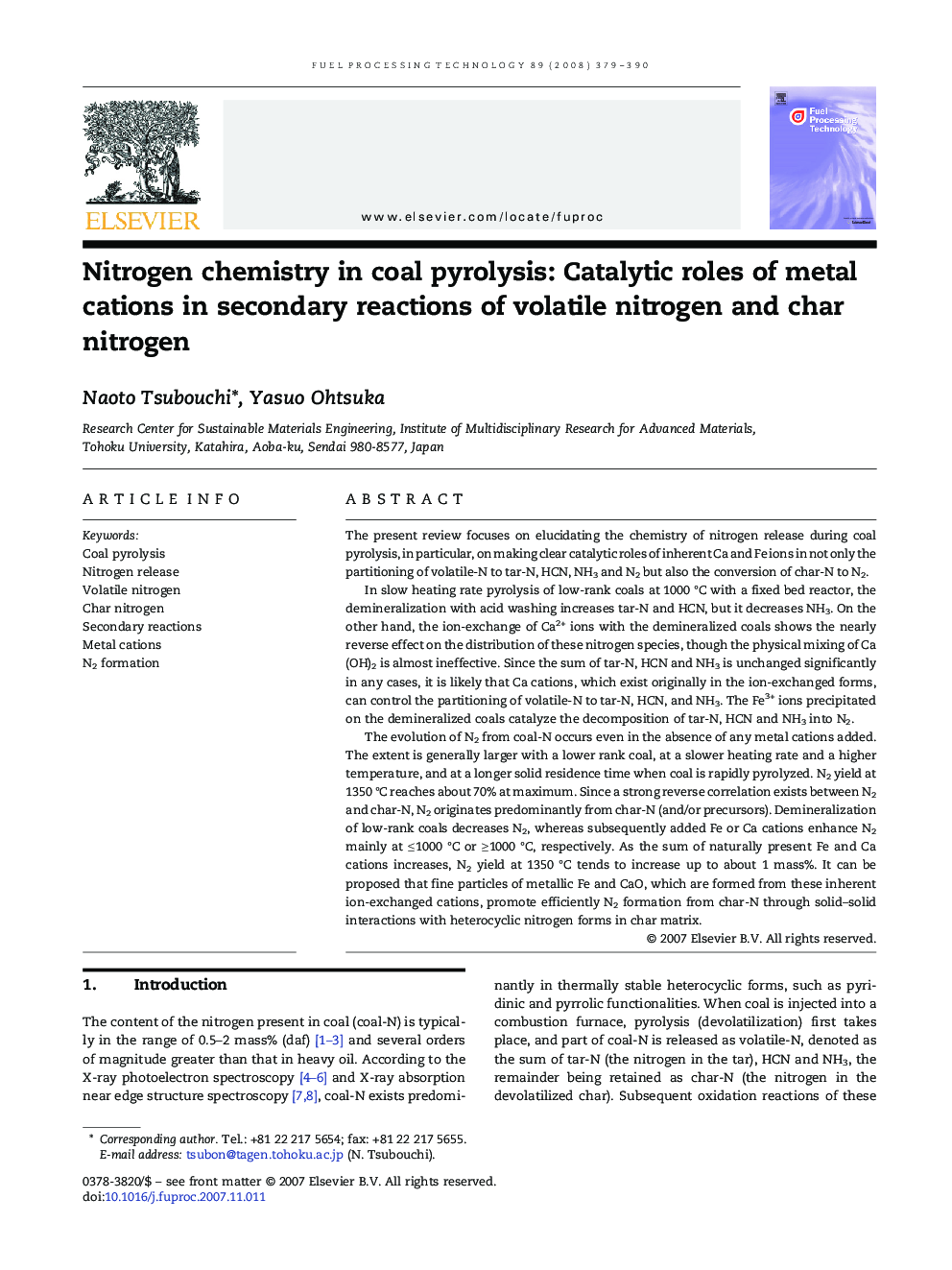| کد مقاله | کد نشریه | سال انتشار | مقاله انگلیسی | نسخه تمام متن |
|---|---|---|---|---|
| 211556 | 461776 | 2008 | 12 صفحه PDF | دانلود رایگان |

The present review focuses on elucidating the chemistry of nitrogen release during coal pyrolysis, in particular, on making clear catalytic roles of inherent Ca and Fe ions in not only the partitioning of volatile-N to tar-N, HCN, NH3 and N2 but also the conversion of char-N to N2.In slow heating rate pyrolysis of low-rank coals at 1000 °C with a fixed bed reactor, the demineralization with acid washing increases tar-N and HCN, but it decreases NH3. On the other hand, the ion-exchange of Ca2+ ions with the demineralized coals shows the nearly reverse effect on the distribution of these nitrogen species, though the physical mixing of Ca(OH)2 is almost ineffective. Since the sum of tar-N, HCN and NH3 is unchanged significantly in any cases, it is likely that Ca cations, which exist originally in the ion-exchanged forms, can control the partitioning of volatile-N to tar-N, HCN, and NH3. The Fe3+ ions precipitated on the demineralized coals catalyze the decomposition of tar-N, HCN and NH3 into N2.The evolution of N2 from coal-N occurs even in the absence of any metal cations added. The extent is generally larger with a lower rank coal, at a slower heating rate and a higher temperature, and at a longer solid residence time when coal is rapidly pyrolyzed. N2 yield at 1350 °C reaches about 70% at maximum. Since a strong reverse correlation exists between N2 and char-N, N2 originates predominantly from char-N (and/or precursors). Demineralization of low-rank coals decreases N2, whereas subsequently added Fe or Ca cations enhance N2 mainly at ≤ 1000 °C or ≥ 1000 °C, respectively. As the sum of naturally present Fe and Ca cations increases, N2 yield at 1350 °C tends to increase up to about 1 mass%. It can be proposed that fine particles of metallic Fe and CaO, which are formed from these inherent ion-exchanged cations, promote efficiently N2 formation from char-N through solid–solid interactions with heterocyclic nitrogen forms in char matrix.
Journal: Fuel Processing Technology - Volume 89, Issue 4, April 2008, Pages 379–390